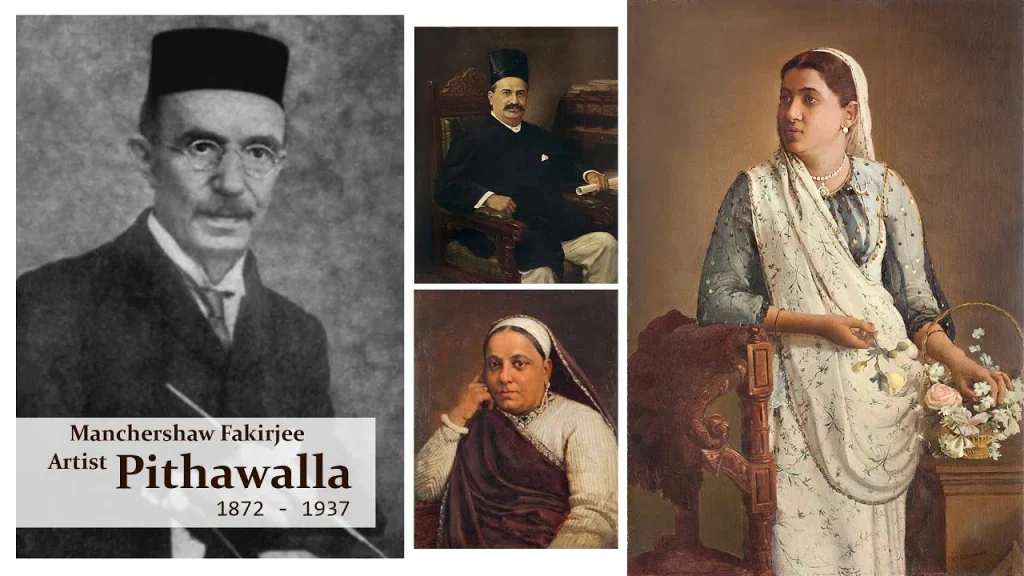Portraiture has a unique place in the history of art. By looking at who was portrayed, and how, one is able to gain insights into social, cultural, and political history. Despite the fact that portraiture has been an art form available to us since antiquity, the form really gained prominence during the Renaissance as a result of two conjoined factors. Firstly, a growing sense of individuality and secondly, the aspirations of a rising mercantile elite to mirror the nobility by having their portrait painted.
Portraiture’s increasing significance was solidified in the 17th century when the French Royal Academy established a hierarchy of genres and placed portraiture second only to history painting. With the decline of monarchy and the middle class gaining more power in 19th-century Western Europe, the genre became increasingly associated with the rising bourgeoisie. In India, the development of portraiture, as we know it today, can be attributed primarily to British colonial intervention. With the establishment of art schools across the nation and the subsequent popularisation of European techniques, especially Naturalism, the Indian artists being trained in these places displayed these influences in their work. From painting portraits of Company officials, these artists made their way in the princely courts of India. Soon the fashion for having one’s portrait painted spread from the landed gentry to the rising elite of Calcutta and Bombay.
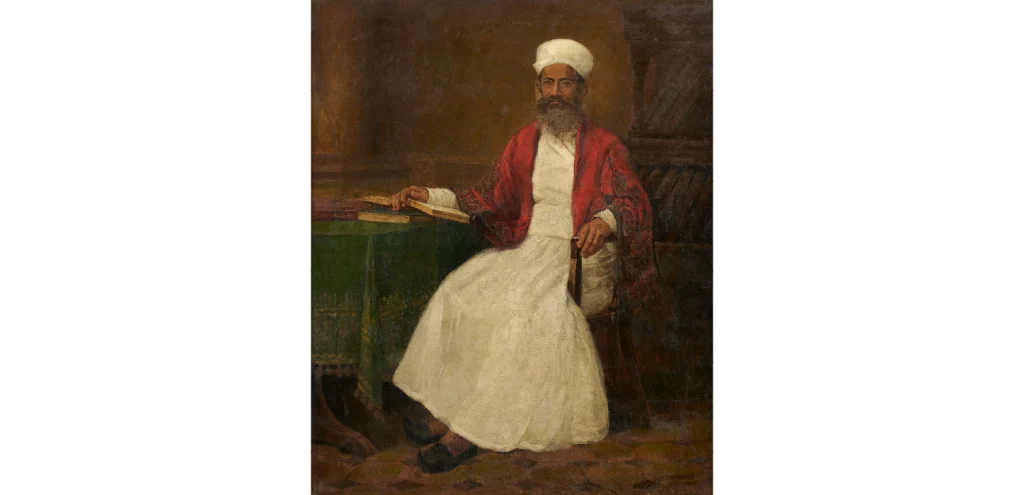 Portrait of a Parsee Scholar. Oil on canvas. Courtesy of Saffronart.
Portrait of a Parsee Scholar. Oil on canvas. Courtesy of Saffronart.
One such artist, Manchershaw F. Pithawalla was an important portrait painter of the Bombay school in the early 20th century. Born in 1872 in Pitha, Surat, he moved to Bombay in 1888 following his father’s death and enrolled at the Sir J. J. School of Art. Trained under the guidance of artist Chiranjilal and principal John Griffiths, Pithawalla spent several years at the school immersing himself in the study and practice of art. His first show at the Bombay Fine Arts exhibition won him a silver medal. Thereafter, he began exhibiting widely at shows in Shimla, Bombay, Darjeeling, Madras and Pune. Pithawalla was a regular prize winner at exhibitions of art societies across India. He was the only artist to win three successive prizes at the Bombay Art Society, including a gold medal in 1908.
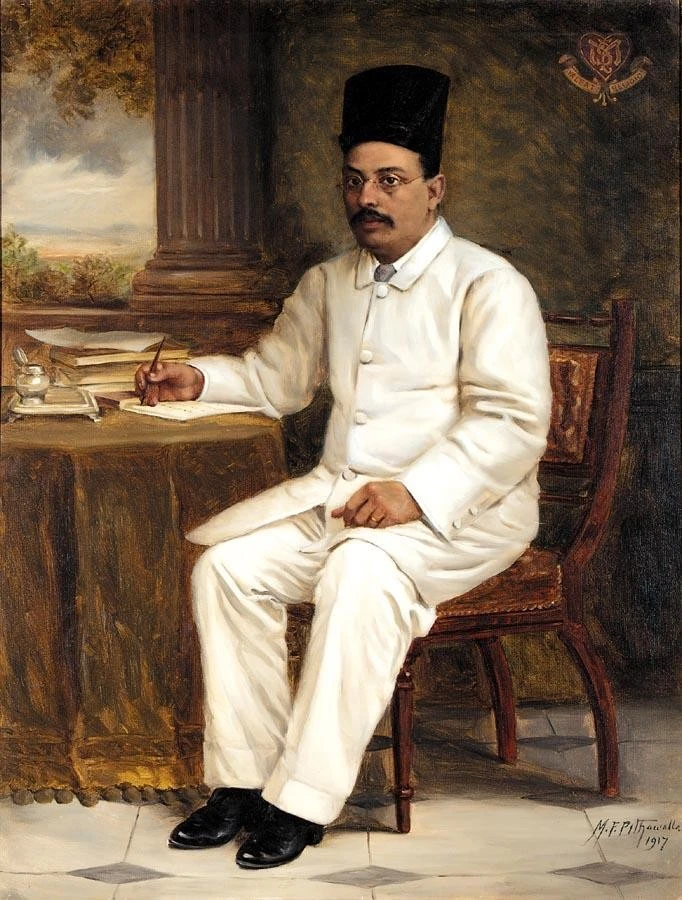 Parsi Gentleman. 1917. Oil on canvas. Courtesy of Invaluable.
Parsi Gentleman. 1917. Oil on canvas. Courtesy of Invaluable.
In 1911, he left for Europe visiting, among other places, Italy to witness the work of the European Old Masters like Leonardo Da Vinci, allowing him to deepen his understanding of the classical European style. Following this he proceeded to England, where he held a highly anticipated exhibition of his works in October 1911 at the prestigious Doré Gallery. It was heralded by the British weekly illustrated newspaper, The Graphic, as the first exhibition by an Indian artist in the city.
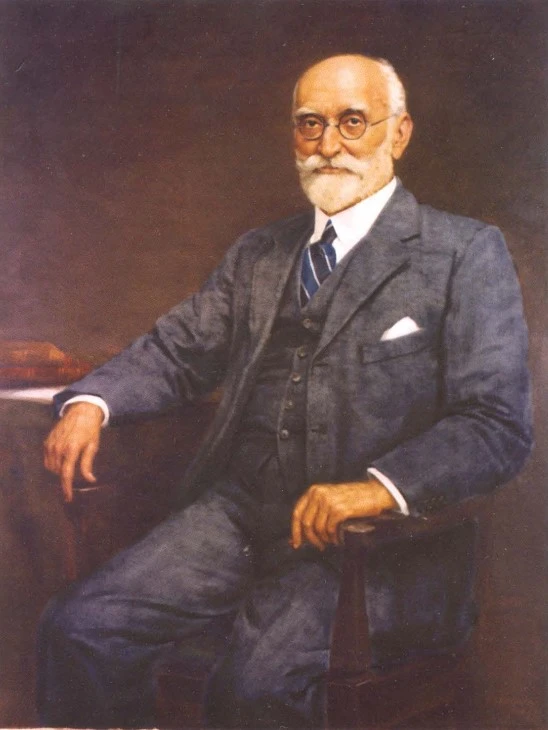 Sir Dorab Tata. 1926. Oil on canvas. Courtesy of Tata Central Archives.
Sir Dorab Tata. 1926. Oil on canvas. Courtesy of Tata Central Archives.
Working with oil, a medium that was relatively new and was introduced to India from Europe, Pithawalla created several large-sized portraits of members of the aristocracy and bourgeoisie, ladies, and gentlemen of high standing – lawyers, landlords, elite merchants, and their wives. Often this included members from the Parsi community, who despite their minuscule population have had an enormous impact on the history of India. In his enigmatic portrait of Sir Dorabji Tata, Pithawalla tries to capture the larger-than-life aura of the industrialist who by then had played a crucial role in transforming the technological landscape of British India. Pithawalla captures his direct, intense gaze and his confident and assertive demeanour, presenting a man of many proud achievements.
Pithawalla’s mastery of the elements of academic realism gave his portraits extraordinary finesse and beauty. His works Parsi Gentleman and Portrait of a Parsee Scholar are testament to his meticulous attention to detail and alluring play of light. Alison Smith, chief curator at the National Portrait Gallery in London, argues that “Portraiture stands apart from other genres of art as it marks the intersection between portrait, biography and history. They are more than artworks; when people look at portraits, they think they are encountering that person.”
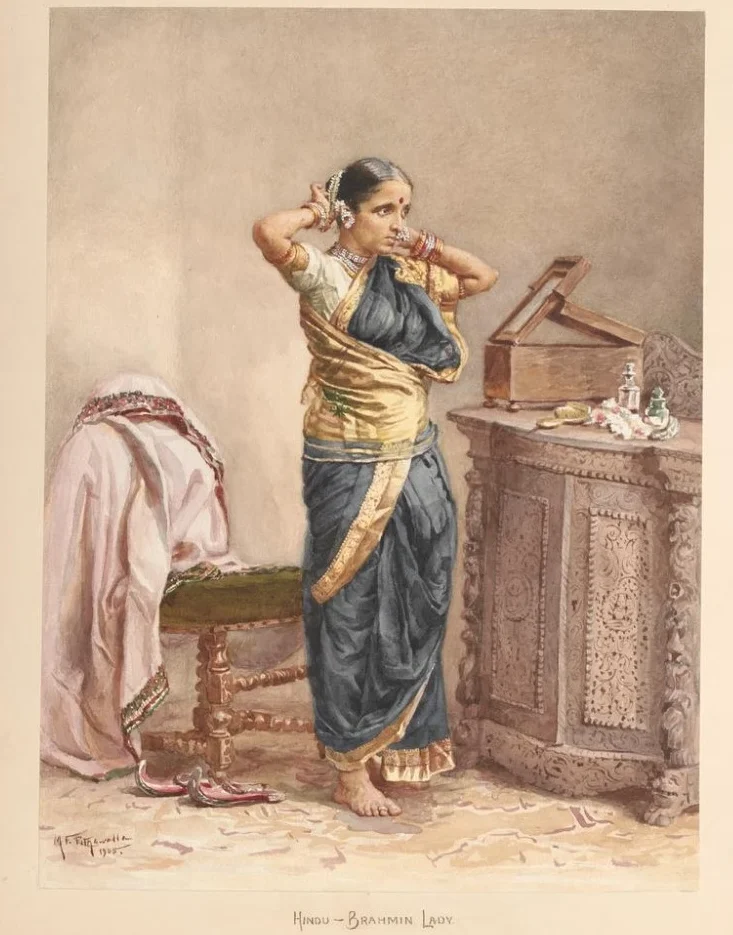 Hindu-Brahmin Lady. 1905. Watercolour on paper. Courtesy of University of Cambridge Digital Library.
Hindu-Brahmin Lady. 1905. Watercolour on paper. Courtesy of University of Cambridge Digital Library.
While majority of Pithawalla’s oeuvre introduces us to such figures, a large part of it also enacts an ethnographic function in presenting ‘types’ to the viewer, especially the foreign viewer. The foremost illustration of this involves Pithawalla’s paintings of women from different Indian communities. In 1905, Pithawalla received a momentous invitation to create an album celebrating Indian womanhood, which was to be presented to Queen Mary during her royal visit to India. Dressed in their traditional attires, Pithawalla depicts these women in several postures and actions: a Hindu-Bhattia Lady works in the kitchen, a Musalman-Sulimani Lady rests on her bed while eating preparing pan, a Zarthosti-Ancient Parsi Lady performs the quintessential fire ritual.
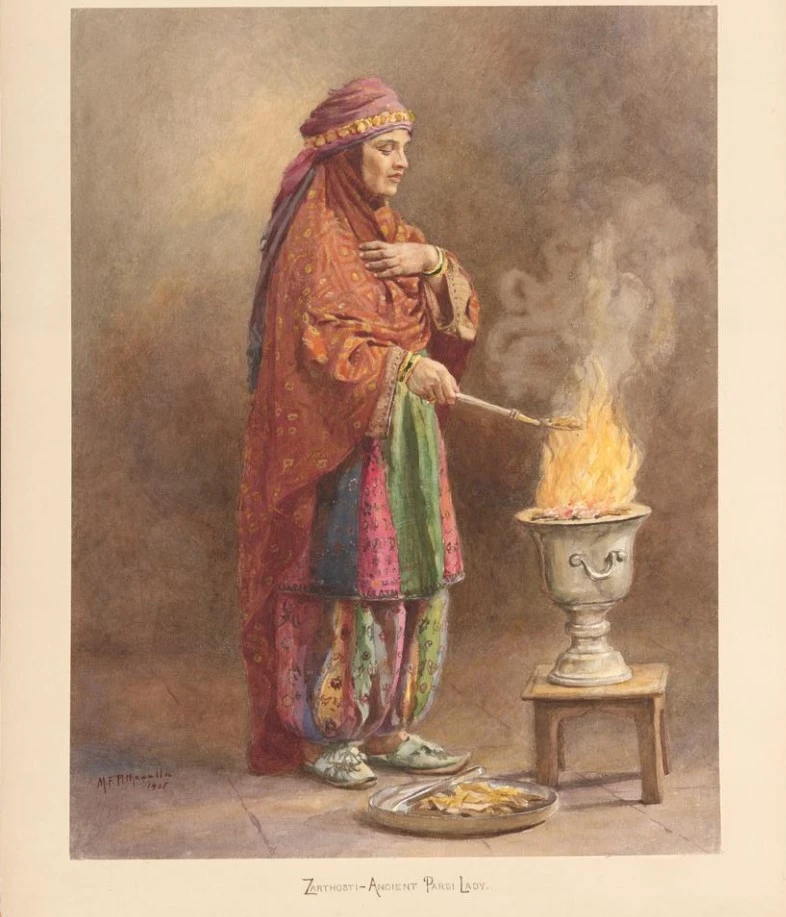 Zarthosti-Ancient Parsi Lady. 1905. Watercolour on paper. Courtesy of University of Cambridge Digital Library.
Zarthosti-Ancient Parsi Lady. 1905. Watercolour on paper. Courtesy of University of Cambridge Digital Library.
Painted in vivid watercolours, these works must have been a visual delight for the queen. He created fourteen full-page watercolours of women, “many of them members of the most ancient and wealthy families in this city.” The welcome address to the queen by the women of Bombay attached to this album was written in English and five Indian languages and mentions, among other details, the improving status of women’s education in the country.
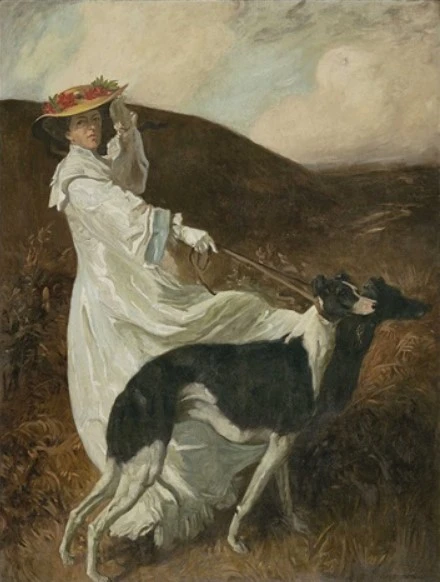 Diana of the Uplands. 1911. Oil on canvas. Courtesy of Artnet.
Diana of the Uplands. 1911. Oil on canvas. Courtesy of Artnet.
In addition to his ability as a portrait painter, Pithawalla possessed an excellent mastery in producing likenesses. Take a look at his marvellous reproduction of Charles Wellington Furse’s Diana of the Uplands (1903-04). Commenting on his copies of Velasquez and Rembrandt paintings, the art critic Sir George Birdwood wrote in an article that, “When slightly aged, it will be hard to distinguish them from the originals.” Birdwood also disclosed that, apart from a few of the very best, he would prefer Pithawalla to any British portrait painter.
Portraiture continues to be a powerful genre for artists to communicate their varied concerns. Whereas in the past it was associated with royalty, aristocracy and the elite, in contemporary times it has become a democratic genre, becoming a vehicle for representing the predicaments of the ordinary. Manchershaw Pithawalla’s work clearly belongs to the former by portraying the established elites of Indian society, but in doing that it presents us with an invaluable resource for understanding the Indian past.
References
- Paint Photographs- Parsi Painters of Mumbai Inspired by Raja Ravi Varma
- Saffron Art- Manchershaw F. Pithawalla
- Mutual Art- Manchershaw Fakirjee Pithawalla
- Wikipedia- Manchershaw F. Pithawalla
- cudl.lib.cam.ac.uk
- Art and Nationalism in Colonial India, 1850–1922. Occidental Orientations by Partha Mitter. Cambridge University Press. 1994.
Read Also:
Painter of Eloquent Silence: The Dark Surrealism of Ganesh Pyne
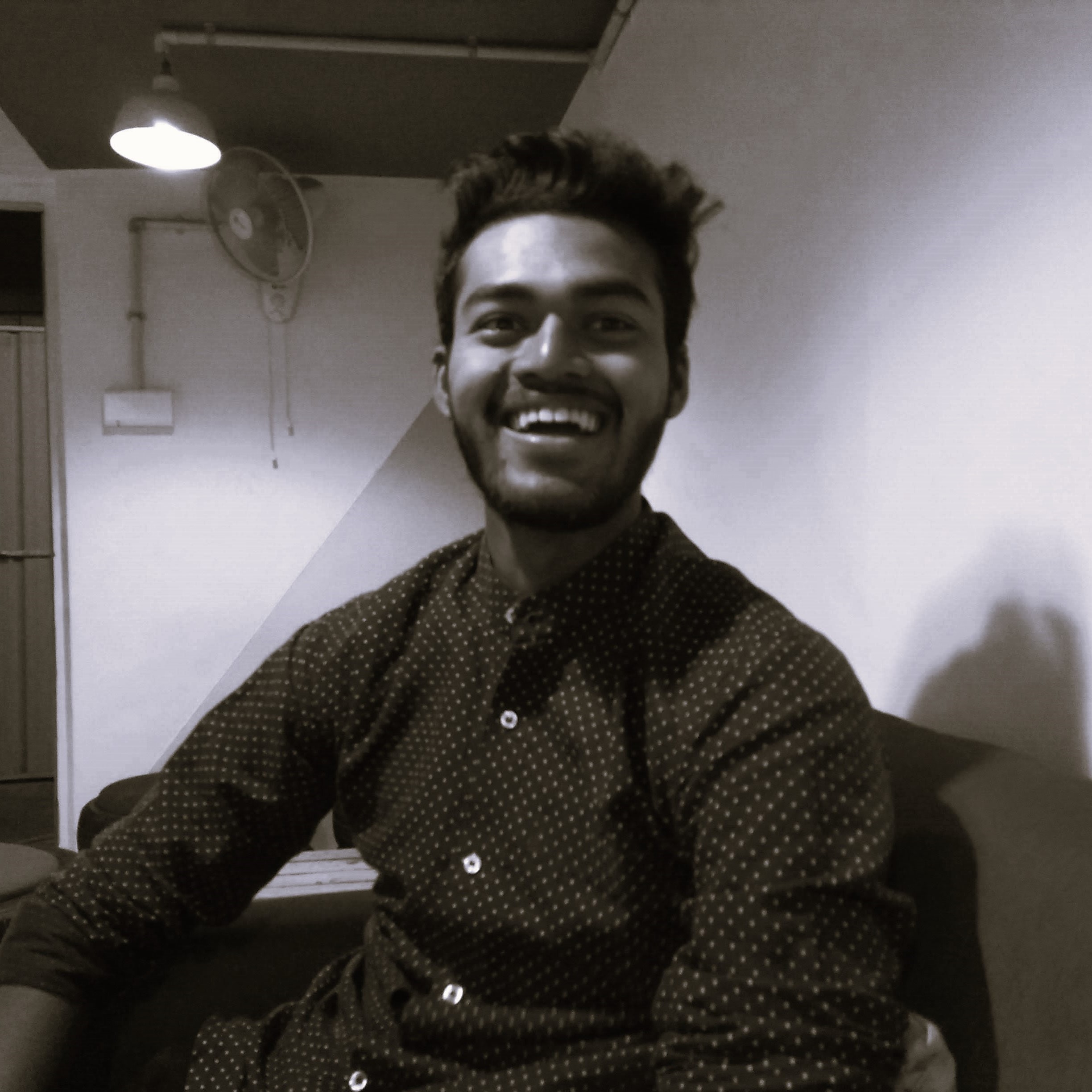
Contributor

